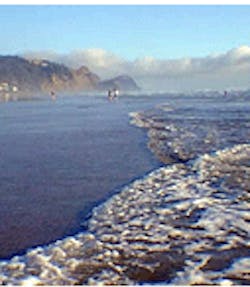EPA Releases Second National Coastal Report
Dr. Paul Gilman, EPA's Science Advisor and Assistant Administrator for Research and Development, announced the release of the "Draft National Coastal Condition Report II" (NCCR2), a collaborative effort of EPA, the National Oceanic and Atmospheric Administration, the U.S. Fish and Wildlife Service, and the U.S. Geological Survey.
NCCR2 will enhance scientific understanding of coastal conditions and help scientists, environmental managers and the public make informed decisions to protect coastal resources.
"With this draft report, we have come very close to achieving a scientifically-defensible way to measure the health of our coasts. When finalized, the second edition of the report will serve as a continuing foundation for efforts to protect, manage and restore coastal ecosystems," said Gilman.
The first National Coastal Condition Report assessed the condition of 70 percent of the nation's estuarine resources, using 1990-1996 data. NCCR2 is based on 1997-2000 data and represents 100 percent of estuarine acreage in the contiguous 48 states and Puerto Rico.
For most areas, NCCR2 used the Environmental Monitoring and Assessment Program's (EMAP) National Coastal Assessment Survey to obtain data from monitoring of coastal waters. Data on the Great Lakes was collected through the Great Lakes Water Quality Agreement between the United States and Canada. State and local environmental agencies were also instrumental in data collection.
NCCR2 shows that conditions in the estuaries, the Southeast, Gulf of Mexico and Great Lakes have improved since the first report, while the Northeast and the West coasts remain essentially the same. These data indicate the nation's estuaries continue to be in fair condition. Regional conditions are provided in the report using the five indicators: coastal habitat, water quality, sediment quality, bottom-dwelling organisms and fish tissue.
EPA also announced the signing of an agreement with the National Oceanographic Partnership Program, an interagency organization, to establish the Integrated Ocean Observing System to improve forecasting of climate change effects on the ocean and to preserve and restore healthy marine ecosystems. The program supports the interagency OCEAN.US Office, which was formed to meet the common oceanic research and coastal management needs of different federal agencies.
A 90-day public comment period is open on NCCR2 until June 8, 2004. EPA seeks public input concerning the information in the report, the availability of additional data, and the appropriateness of conclusions drawn from the information presented.
Source: EPA
